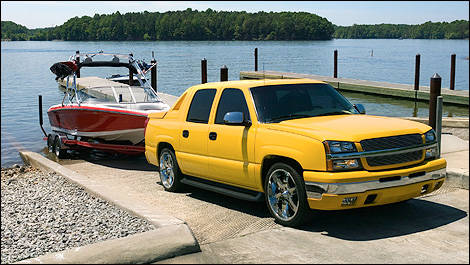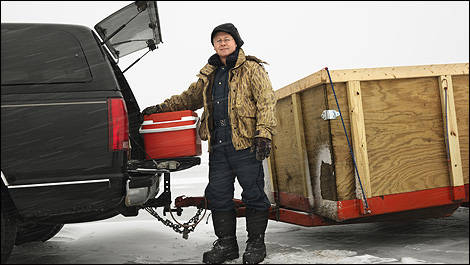This summer, as with every other summer, thousands upon thousands of Canadians will hit the highways and byways of our great country towing campers, power toys or both behind their trucks and SUVs. Whatever the length of the weekend, should you find yourself on the freeway, you'll without a doubt notice huge flocks of road trains headed towards campgrounds or the lakes.
Hitching up and trailering is an ideal family activity for those who occasionally require added space to transport a few day's worth of camping gear, food and firewood without having to use a larger, thirstier and more cumbersome vehicle all year. Many new cars can tow at least a small trailer, while some full-sized trucks can haul well over 10,000 pounds.
Investing in a new trailer, truck or both requires some planning and thinking ahead. The first and most important part of towing is determining your needs and therefore the capacity of the vehicle you are considering. A range of factors contribute to the weight your car or truck can pull, and you can check your owner's manual or online for specifications.
The total capacity of your machine is called the Gross Vehicle Weight Rating (GVWR). You may find your vehicle's GVWR indicated on a sticker in one of the door jams or, again, in your owner's manual. It indicates how much total weight the vehicle can handle safely including a loaded trailer, passengers and any other type of equipment.
You'll obviously need a hitch to attach a trailer to your vehicle. There are several varieties available placed into a number of classes which indicate the weight they're able to support. Hitches have a specified maximum GTW (Gross Tow Weight). This is the total weight capacity of the loaded trailer. Tongue Weight capacity is also very important. It indicates the total amount of weight that can rest on the car's hitch from the trailer's tongue.
Packing your trailer should not be done hastily. As a general rule, roughly 60% of the weight should be in the front of the trailer and the other 40% in the rear. As well, make sure the cargo is evenly distributed. Also, don't forget to strap or tie down loose items securely so that they don't move around and upset the balance of your load.
Don't ever exceed posted capacities. In fact, a safe bet is to stay under them to be sure. After all, safety is of the utmost importance when driving with your family and their possessions. Be mindful that loaded vehicles require considerably longer distances to stop and accelerate. It's very important to be aware of the added need for space when passing and stopping while towing a load.
 |
| Photo: Thinkstock |
Hitching up and trailering is an ideal family activity for those who occasionally require added space to transport a few day's worth of camping gear, food and firewood without having to use a larger, thirstier and more cumbersome vehicle all year. Many new cars can tow at least a small trailer, while some full-sized trucks can haul well over 10,000 pounds.
Investing in a new trailer, truck or both requires some planning and thinking ahead. The first and most important part of towing is determining your needs and therefore the capacity of the vehicle you are considering. A range of factors contribute to the weight your car or truck can pull, and you can check your owner's manual or online for specifications.
The total capacity of your machine is called the Gross Vehicle Weight Rating (GVWR). You may find your vehicle's GVWR indicated on a sticker in one of the door jams or, again, in your owner's manual. It indicates how much total weight the vehicle can handle safely including a loaded trailer, passengers and any other type of equipment.
You'll obviously need a hitch to attach a trailer to your vehicle. There are several varieties available placed into a number of classes which indicate the weight they're able to support. Hitches have a specified maximum GTW (Gross Tow Weight). This is the total weight capacity of the loaded trailer. Tongue Weight capacity is also very important. It indicates the total amount of weight that can rest on the car's hitch from the trailer's tongue.
Packing your trailer should not be done hastily. As a general rule, roughly 60% of the weight should be in the front of the trailer and the other 40% in the rear. As well, make sure the cargo is evenly distributed. Also, don't forget to strap or tie down loose items securely so that they don't move around and upset the balance of your load.
Don't ever exceed posted capacities. In fact, a safe bet is to stay under them to be sure. After all, safety is of the utmost importance when driving with your family and their possessions. Be mindful that loaded vehicles require considerably longer distances to stop and accelerate. It's very important to be aware of the added need for space when passing and stopping while towing a load.
 |
| Photo: Thinkstock |


